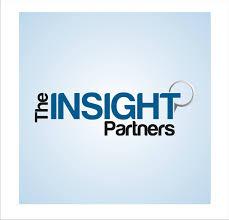The tempered glass market has evolved from a niche safety feature to a ubiquitous material across numerous industries. Known for its enhanced strength and safety characteristics – shattering into small, relatively harmless fragments instead of sharp shards – tempered glass is a critical component in automotive applications, construction, consumer electronics, and furniture. Driven by stringent safety regulations, increasing consumer awareness, and technological advancements, this market is experiencing consistent growth and innovation.
The primary drivers fueling the tempered glass market are multifaceted. Stringent safety regulations in the automotive and construction sectors mandate the use of tempered glass to minimize injury in case of breakage. The booming consumer electronics industry, particularly smartphones and tablets, relies heavily on tempered glass for screen protection. Architectural trends favoring large glass facades and energy-efficient windows also contribute significantly to demand. Furthermore, the increasing use of tempered glass in furniture and household appliances underscores its versatility and durability.
The Tempered Glass Market is expected to register a CAGR of 8% from 2025 to 2031, with a market size expanding from US$ XX million in 2024 to US$ XX Million by 2031. This growth is particularly strong in developing economies with rapidly expanding construction and automotive sectors, as well as in mature markets driven by replacement demand and new applications. The increasing penetration of smartphones and the growing demand for durable and aesthetically pleasing architectural glass are key contributors to this expansion.
The tempered glass market can be segmented by application (automotive, construction, electronics, furniture, appliances), by thickness, and by end-user. The automotive sector remains a significant end-user, with tempered glass used for side and rear windows. The construction sector accounts for a substantial share, driven by demand for safety glass in buildings, facades, and interior applications. The electronics sector, particularly screen protectors for mobile devices, is a rapidly growing segment.
Analyzing the market from a manufacturing perspective reveals a focus on process optimization and technological advancements. Innovations in glass tempering technology are aimed at improving efficiency, reducing energy consumption, and enhancing the quality and uniformity of the tempered glass. The adoption of automation and digital technologies in manufacturing processes is also increasing to improve productivity and reduce costs.
From a market perspective, the tempered glass industry comprises large multinational glass manufacturers, specialized tempering companies, and regional players. Competition focuses on product quality, cost-effectiveness, customization capabilities, and the ability to meet specific industry standards and regulations. The supply chain involves raw glass suppliers, tempering facilities, and distributors catering to various end-user industries.
Government regulations and safety standards exert a significant influence on the tempered glass market. Building codes mandating the use of safety glass in specific applications and automotive safety regulations regarding glazing materials directly drive demand. Furthermore, increasing consumer awareness regarding safety and durability is also a significant market driver.
In conclusion, the tempered glass market is a resilient and growing sector underpinned by stringent safety regulations, the booming consumer electronics industry, and increasing demand in construction and other applications. Technological advancements in manufacturing processes and a growing focus on safety and durability will continue to fuel market expansion. As urbanization and technological adoption continue globally, the demand for tempered glass will remain strong, solidifying its position as a critical material across diverse industries.
Author's Bio:
Nilesh Shinde
Senior Market Research expert at The Insight Partners

